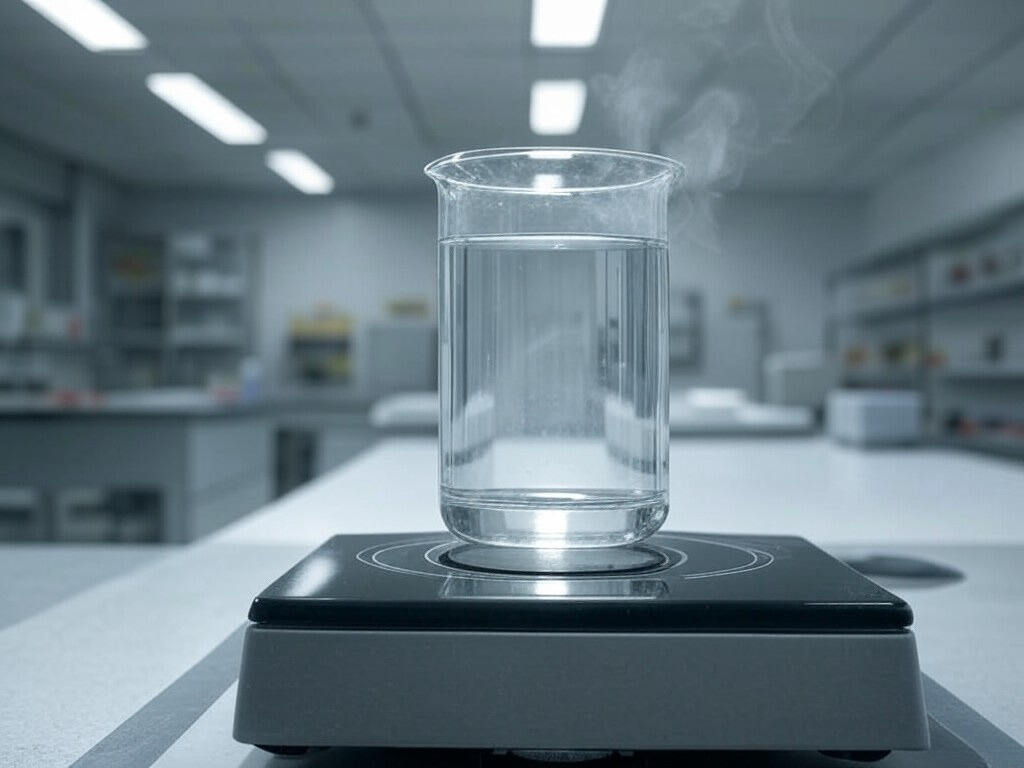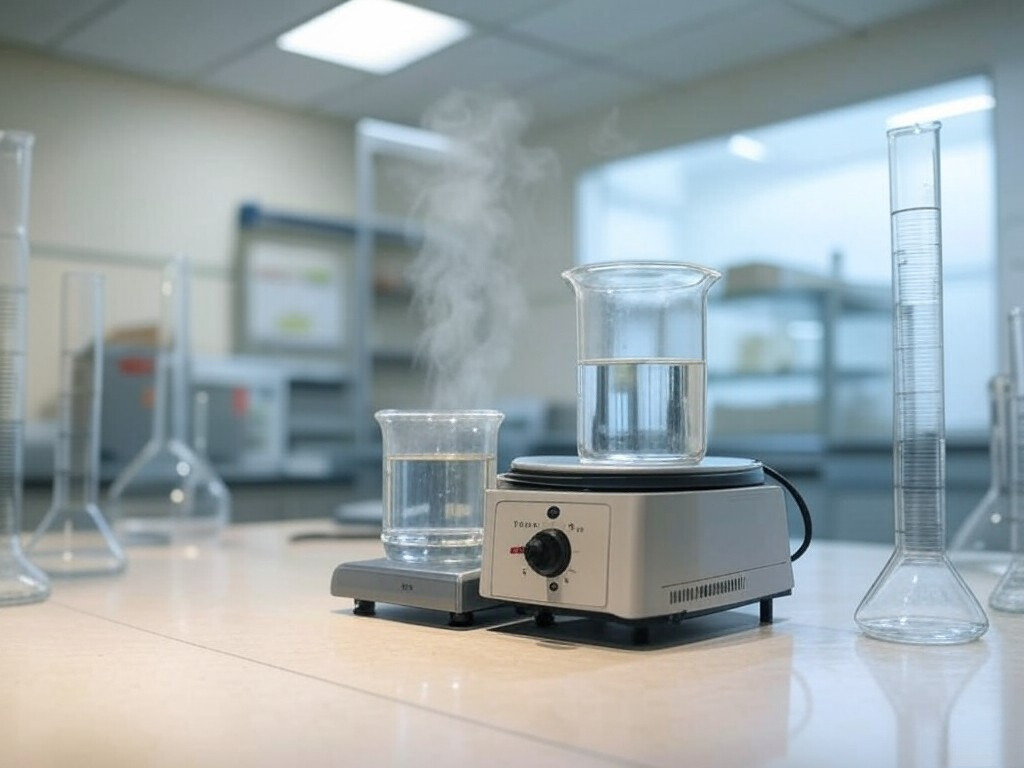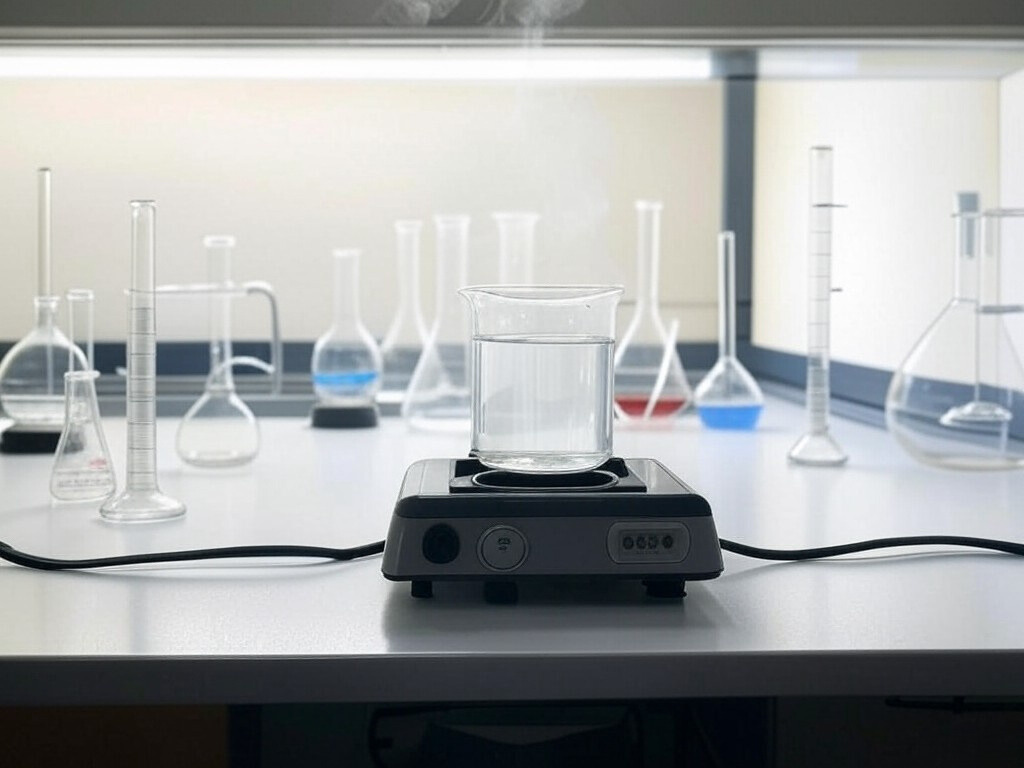Evaporation is a fundamental laboratory technique used to separate a solvent from a solution or mixture. By applying heat, the liquid solvent is converted into a gas, leaving behind the dissolved solids or less volatile components. This process is essential in many chemical procedures and analytical methods.

You’ve likely observed evaporation in everyday life, such as when puddles dry up after rain. In a laboratory setting, this natural phenomenon is harnessed with precision to achieve specific scientific goals. Chemists utilize evaporation to concentrate solutions, purify substances, or recover valuable materials from mixtures.
The controlled application of heat is key to successful evaporation in the lab. You can use various methods to provide this energy, including hot plates, water baths, or rotary evaporators. The choice depends on factors like the solvent’s properties and the desired outcome of your experiment.

Evaporation is a crucial process in chemistry and everyday life. It involves the transformation of a liquid into a gas at temperatures below the boiling point.
Evaporation occurs when molecules at the surface of a liquid gain enough energy to overcome intermolecular forces and escape into the gas phase. Heat is the primary energy source for this process. As the temperature increases, more molecules gain sufficient kinetic energy to break free.
The rate of evaporation depends on several factors. Surface area plays a key role – a larger surface allows more molecules to escape. Higher temperatures accelerate the process by providing more energy to the molecules.
Pressure also affects evaporation. Lower atmospheric pressure reduces the force holding molecules in the liquid state, making it easier for them to vaporize. Wind or air movement can speed up evaporation by quickly removing the vapor molecules from the surface.
In solutions, evaporation affects solvents and solutes differently. The solvent, typically water in aqueous solutions, evaporates more readily than the dissolved solutes. This principle is the basis for many separation techniques in laboratories.
As the solvent evaporates, the concentration of the solute increases. This can lead to supersaturation and eventual crystallization of the solute. You can use this phenomenon to purify substances or create concentrated solutions.
Volatile solvents evaporate more quickly than water. Examples include ethanol and acetone. Their low boiling points and high vapor pressures make them useful in various chemical processes and cleaning applications.

Evaporation is a crucial laboratory technique for concentrating samples and removing solvents. Various methods and devices are used to achieve efficient evaporation while preserving sample integrity.
Rotary evaporators are widely used for solvent removal. You’ll find a rotating flask connected to a vacuum system and a heated water bath. This setup allows for gentle evaporation at reduced pressure, minimizing sample degradation.
To prevent solvent bumping, you can use a cold trap. This device condenses vapors before they reach the vacuum pump. Vacuum pumps are essential for lowering pressure and facilitating evaporation at lower temperatures.
For smaller sample volumes, you might opt for a simple setup using a hot plate and a beaker. This method works well for heat-stable compounds but requires careful temperature control to avoid overheating.
Centrifugal evaporators offer a more sophisticated approach to sample concentration. These devices combine centrifugal force with vacuum and heat to rapidly evaporate solvents from multiple samples simultaneously.
You’ll appreciate the real-time temperature monitoring features in modern evaporators. This helps maintain sample integrity by preventing overheating. Some systems also incorporate solvent recovery mechanisms, reducing environmental impact and costs.
Vacuum concentrators are ideal for heat-sensitive samples. They use a combination of vacuum and centrifugal force to remove solvents at room temperature or below. This technique is particularly useful for biological samples or volatile compounds.
For sublimation processes, you can use specialized freeze-drying equipment. This allows for direct transition from solid to gas phase, bypassing the liquid state entirely.
Evaporation is a cornerstone technique for precise solvent separation and sample concentration in laboratories. By choosing the right equipment and understanding the principles, you ensure accurate, efficient results for your experiments.